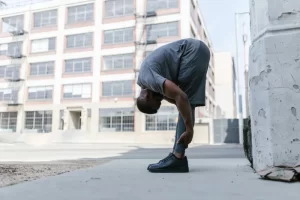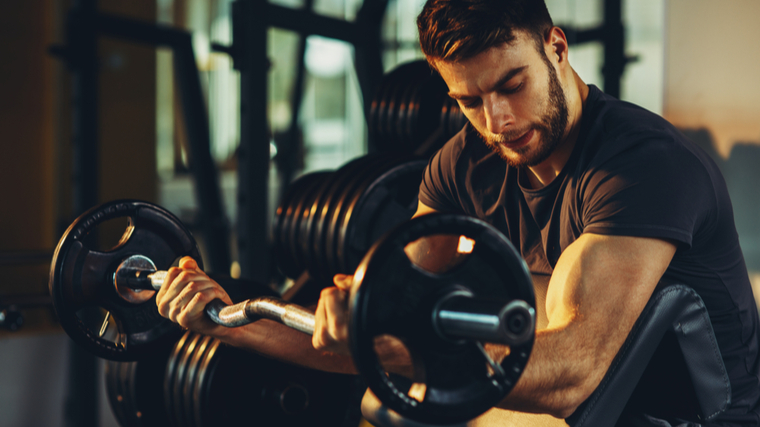When first going to the gym, whether you are a complete beginner or it has just been a few years, it can be an intimidating and overwhelming task. To help ease your mind, we have compiled the best workouts for beginners, and we will also cover some essential exercises!
Often, when we are starting something new, be it exercise or any other type of hobby, home repair project, or otherwise, we turn to our friends for tips and advice. While this can definitely be a great way to learn the ropes, our loved ones sometimes have no idea how much of a novice we really are and ultimately end up suggesting things that are beyond our means.
The good news is that there are plenty of well-designed beginner workouts that safely introduce or reintroduce your body to exercise. The best workouts for beginners also help you learn the basic foundation movement patterns and exercises that you will eventually build upon with more advanced progressions and modifications as you get more fit and strong.
Even when you are just starting out, it’s important that your fitness routine includes beginner workouts that address one or more of the five major areas of health-related fitness: cardiovascular endurance, muscular strength, muscular endurance, flexibility, and body composition. Below, we share a few examples of the best workouts for beginners to help you improve your aerobic endurance, build muscle, and lose fat.
Best Cardio Workouts for Beginners

“Cardio” generally refers to exercises that improve your aerobic endurance. Depending on your current level of fitness, a challenging cardio workout for a beginner may be as seemingly easy as a brisk walk. Any form of cardio — whether running, cycling, rowing, swimming, or using an exercise machine like an elliptical — will elevate your heart rate and cause you to breathe harder in an effort to get more oxygen into your body and circulate to your working muscles.
Cardio exercises improve your endurance and can improve your body composition by burning calories and increasing your metabolic rate while simultaneously building muscle mass in the muscles targeted by the mode of exercise you’ve chosen.
Sample Cardio Exercises for Beginners
- Walking
- Incline walking
- Hiking
- Stair climbing
- Elliptical trainers
- Cycling outside or on an exercise bike
- Spinning
- Jogging
- Rowing
- Swimming
- Water running
- Jumping rope
- Jumping jacks
- Cross-country skiing
- Mountain climbers
- Marching in place
Begin with a light to moderate intensity, around a five on an effort scale of one to ten, with ten being an all-out effort. If you’re choosing an exercise like jogging, it’s best to adopt the run/walk method. For example, walk for a few minutes and then try jogging for 30 to 60 seconds. Then walk another one to two minutes before another 30 to 60-second jog. Aim for a total of 10 to 20 minutes, depending on your current fitness level.
Regardless of the exercise modality you choose, beginner cardio workouts should be capped at 20 minutes or so initially. Gradually increase the duration of the workout along with intensity as appropriate.
Best Strengthening Workouts for Beginners
There are many ways to build muscular strength and endurance. You can use resistance training machines, dumbbells, barbells, weight plates, resistance bands, kettlebells, medicine balls, sandbags, or even your own body weight. Even if you don’t have access to a gym or simply prefer to work out at home or outside, there are plenty of excellent beginner strength training workouts you can do that will make you stronger, increase your muscle mass and definition, and reduce body fat.
Beginner strength training workouts that use lighter weights and a higher number of reps will increase your muscular endurance — the ability to persist during exercise without fatiguing — while workouts that use heavier weights and fewer reps increase the strength and size of your muscles.
Sample Beginner Total-Body Bodyweight Workout
Complete two rounds of the following exercises:
- 25 jumping jacks
- 15 bodyweight squats
- 20-30 second plank
- Walking lunges — 10 per side
- 10 push-ups (on knees if you need to)
- 30 seconds running in place with high knees
- 15 glute bridges
- 30 seconds Russian twist
- 10 lateral lunges per side
- 15 superman back extensions
- 15 bent-knee triceps dips off the edge of a bench or chair (straighten your legs if they are too easy)
Sample Beginner Total Body Strengthening Workout
For each exercise, use a weight you lift with proper form for the full range of motion for the number of reps given. The weight should feel challenging, especially for the last 4 to 5 reps of each set. Complete two rounds of the following:
- 30 seconds mountain climbers
- 12 squats with dumbbells at shoulder height
- 10 reps per side of step-ups with overhead press
- 12 reps of chest press with dumbbells
- 12 deadlifts with a barbell or dumbbells
- 20 stability ball crunches
- 12 reps of biceps curls
- 12 reps per side of bent-over single-arm rows
- 12 dumbbell tricep extensions per side
- 30-second planks
- 12 reps of bent-over reverse fly with dumbbells
Sample Beginner Resistance Machine Workout
Follow the instructions on each resistance machine in the circuit to adjust it according to your body size. Use a weight you can use with proper form and a full range of motion for 10 to 12 reps, but that feels challenging toward the end of each set. Complete two rounds of 10 to 12 reps of the following:
- Leg press machine
- Chest press
- Leg curls (for hamstrings)
- Lat pull-downs
- Assisted pull-ups
- Chest fly machine
- Shoulder press machine
- Cable machine triceps extensions
- Cable machine pallof press
- Resisted crunches
Tips for Beginning a Workout Plan

The following are a few helpful tips for making your workouts successful as you start out:
- Warm up before each workout with a few minutes of easy cardio.
- Stretch before and after your workout to improve your flexibility and prevent soreness.
- Ease into things by starting out with alternating rest days and exercise days (three workouts per week). Gradually progress to four to five workouts per week.
- Listen to your body, and if you feel pain or excessive fatigue with any given exercise, stop immediately. Moreover, if you’re really sore after a workout, take an extra rest day, even if you planned to work out the following day.
- Vary the exercises you do.
- Drink plenty of water before, during, and after your workouts.
- Remember, proper form is paramount. Always err on the side of using lighter weights and doing fewer reps to ensure you’re able to execute the move correctly.








Leave a comment
Your email address will not be published. Required fields are marked *